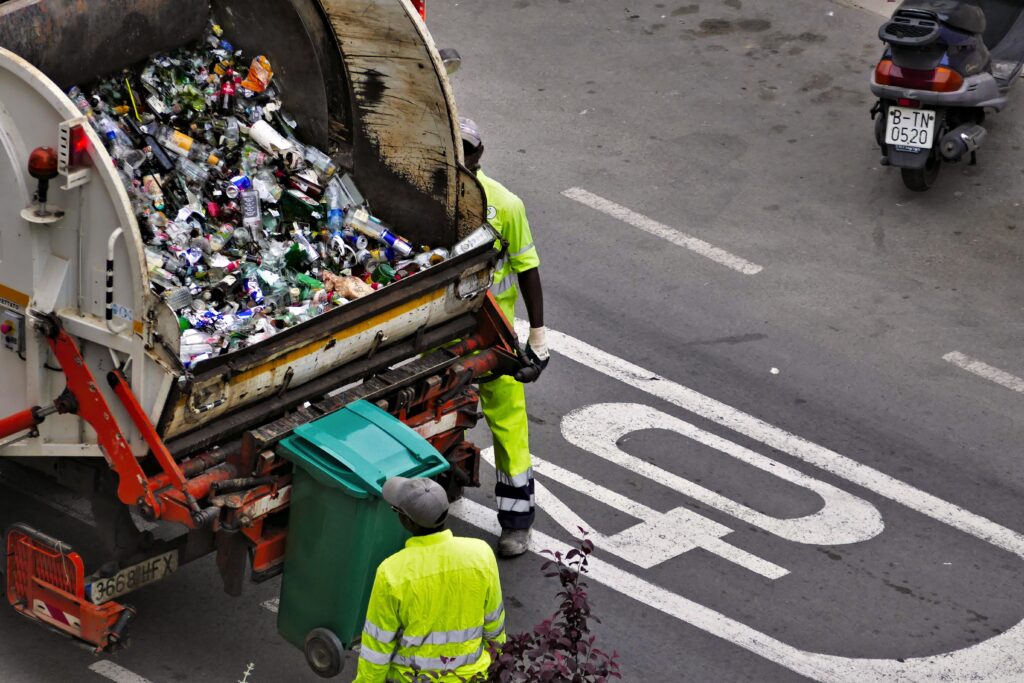When it comes to sustainability, one of the first words that comes to mind is most likely recycling. We know we’re supposed to “reduce, reuse, and recycle” but sometimes it feels easier said than done.
We were told that much of the stuff that would otherwise become litter could be melted down or shredded up and made into something new. Now, several countries including China, Malaysia, and Cambodia are shipping our recycling back to us. These materials are rejected by these countries because they are too highly contaminated to be valuable and most likely end up in landfills. As the world changes, it’s become normal to question whether recycling even matters anymore.
————————————————————————
Recycling has been at the center of the sustainability conversation for decades and we don’t seem to be getting much better at it. In fact, recycling rates in the United States haven’t increased very much within the past twenty years. The way we’ve been approaching recycling is flawed but that doesn’t mean it’s hopeless. Let’s get into it!
————————————————————————
A RECYCLING TALE OF TWO CITIES
After every college party my roommates and I hosted in Ann Arbor, Michigan, we would pour out all the half-empty beer bottles and pop cans and drive them over to the closest grocery store. At the back of the store, we’d deposit them one-by-one into a machine that would let the store know we were owed 10 cents apiece. The small amount of cash we’d receive would end up going towards the purchase of drinks for the next weekend.
Over a decade later, at an outdoor concert in Seattle, Washington, I nearly screamed when someone compacted an aluminum can under their foot before tossing it into an overflowing recycling bin. “It’ll save space,” they said. I hesitantly joined them while I realized I’d never experienced this before. Metal cans needed to be in their original shape to be returned to the deposit machines in Michigan that I grew up with. However, in Seattle, the recycling process for aluminum cans was different so we worked together to smash what would have been about twenty bucks in Michigan.
This light-hearted story showcases one of things that frustrates folks the most. Recycling is confusing and it’s partly because the rules can be so different depending on where you live.
————————————————————————
HOW TO RECYCLE THE RIGHT WAY
No matter where you live, the short and sweet answer is to only use your curbside recycling bin for the specific items that are accepted where you live.
The confusion around recycling comes partly as a result of our country’s limited and delicate curbside recycling infrastructure. Ultimately, recycling is an industry. It makes the most money when our recycling facilities can isolate materials like aluminum, glass, paper fibers, and certain plastics and sell them for the best price.
As much as we want to believe that any trash could become treasure, curbside recycling works best when we follow the rules. Doing anything else becomes “wish-cycling”, or the act of recycling things we wish could be recycled even if they can’t be or require a separate process to be properly recycled.
Each city has different recycling rules. It often feels like a pop quiz every time you find yourself in front of a row of trash bins. I’ve lived in five different cities in my adult life so even though I live and breathe all things related to trash, I still often find myself using a cheat to make sure I’m recycling properly. In Seattle, we have this handy guide that I refer to often. Your city likely has a similar resource. Google search “what can I recycle in [insert city where you live here]”. Download, print, or save your local recycling guide for easy future reference.
————————————————————————
WHAT TO DO WHEN YOU SEE THE RECYCLING SYMBOL
Recycling can feel exhausting because to make things even more complex, the triangle “chasing arrows” recycling symbol does not necessarily mean what you think it means. California even decided to ban it to prevent additional confusion.
That universal recycling symbol means the material theoretically could be melted down or shredded up and made into something new. It doesn’t mean that’s possible with the infrastructure that exists where you live and therefore the item does not belong in your recycling bin.
Understandably, you shouldn’t feel like you need an advanced degree in garbology to get through the day. Even when you see the triangle recycling symbol, always defer to your local recycling rules to know if that item truly belongs in your recycling bin.
————————————————————————
HOW TO RECYCLE BETTER
[1] Sort it well. Materials need to be clean, empty, and dry to have the highest chance of being used again. Piles of cardboard covered in pizza sauce and aluminum cans coated in cat food aren’t very valuable to those who buy our recycled materials. If you’re not sure where to put something, double check your local guide for your best options or throw it in the trash to avoid contamination.
[2] Recycle less. This may feel counterintuitive but recycling more isn’t the most helpful sustainability solution. We want to focus on work that reduces the total amount of materials we’re disposing of overall. At home or at work, choose to use reusable, refillable, or returnable products whenever you can.
————————————————————————
TL;DR (too long, didn’t read): Recycling is confusing and oftentimes frustrating. It isn’t entirely your fault you struggle to figure out which items are supposed to go in your recycling bin. Still, for recycling to work well, it’s important to follow the recycling rules that are specific to where you live. Recycling isn’t hopeless and it’s possible to approach this old habit in new ways.
GET STARTED
ON YOUR OWN WITH OUR
ROAD TO ZERO WASTE COURSE




